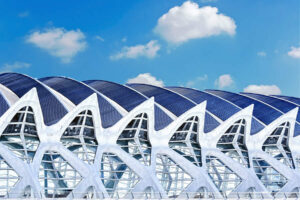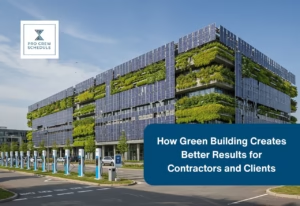Natural disasters like earthquakes and hurricanes that occasionally occur have been an issue lately in the construction industry. With these natural disasters going on, construction professionals cannot completely ignore this and that drives them to discuss about building resilience and sustainability. Engineers, architects, developers and contractors are now giving more importance and focus to resilient design, as an immediate way to mitigate climate change’s impact.
In this blog, we are going to discuss what resilient design is all about, its principles and strategies, and most importantly what resilience has to do with MEP design.
What is Resilience?
The term resilience often describes the ability to become accustomed to changing conditions as well as capable of maintaining and recovering functionalities after an abrupt disruption. In the simplest definition, resilience is the capability of recovering after a massive disturbance. With infrastructures being resilient, any communities could be able to maintain bearable conditions in any form of disruptive events like natural power loss and natural disasters.
Resilient design is commonly defined as the process of designing landscapes and buildings to mitigate the mild to extreme impact of changing weather and other occurring external threats. This design is specifically focusing on realistic and practical solutions. Thus, contractors who are not just to manage project but also have to be keen in designs should also be practical and realistic at the same time. Staying up to date with any latest trends from the industry is also a must-do. Progressing and adaptability is proven easy when getting more informed or immersed with any of those emerging builders’ trends today.
Resilient Design Strategies
Resilience isn’t about either a design measure or a single solution. To be best understood, resilience is a multifaceted lens that directly require proactivity when creating effective solutions for disruptive elements. On the other hand, resilient design has involvement in a complete and comprehensive rethinking of a specific built environment as well as remembering that every project is not the same way as others or completely distinct.
Builders, engineers, designers and contractors have kept in their minds of how important the concept of resiliency is. Strategies for such well-planned designs are best implemented if advanced technologies are deployed in the work. A builder’s schedule software is taken into consideration. Real-time collaboration and efficient communication between teams and crew involved is totally achieved through utilizing this.
A list of several practical strategies for resilience improvements is listed below:
- Critical systems must be located in particular areas that are totally unaffected by any extreme weather events like flooding
- Design and construct buildings in order to strongly withstand extreme changing weather, like strong storms
- Install redundant water storage or water supplies just in case of emergencies. Installations of water storage are best monitored and supervised when there’s a use of advanced technologies like the construction scheduling software. HVAC professionals must be wise enough to take apply such advancement.
- Design buildings that successfully maintain livable conditions if there’s any case of power loss, or perhaps an interruption coming from heating fuel deliveries. It can be accomplished by passive cooling and heating techniques
- The climates past records can help comprehend the particular behavior of a certain region. Nonetheless, designs should be considered the weather conditions of the future at the same time
- Design long-lasting buildings with solid elements like waterproof interior finishes, resistant windows, rain screens, etc.
- Set up an on-site renewable energy and make sure to utilize it as resourcefully as possible
- Install systems having through manual overrides just in case if there’s power outrages or malfunction
- Learn all about product hazards and get specific with any products or materials that will potentially leak hazardous substances
- Install redundant electrical systems and make sure to have enough backup power capacity for any critical equipment and devices. Electrical contractors have to be precise and detailed with the installations. A subcontractor scheduling software is an effective tool to use for project and crew management. There’s much more of collaboration between all crew as well as communication because of the application of this software tool.
Resilient Design Principles
- Basic human needs are best achieved in resilient systems
This refers to portable water, sanitation, lighting, food, livable conditions, air quality and many more
- Durability
Strategies that directly increases the durability of a system has also improved resilience. This can be accordingly applied for public infrastructure, buildings, and ecosystems.
- Resilience can be applied at any project scales
The strategies for resilient design are being applied to any communities, different buildings, and larger regional scales. Additionally, resilience can also be applied for numerous time scales, from immediate startup to long-term. For contractors or project managers, resilience can also be applied to the work and team. Strategies like construction crew management is one of the most crucial implementations that need to be performed.
- Simplest systems are rather more resilient
Systems having a simpler design that suits their respective application are proven to be much more resilient compare with other overly complex systems that have more demanding maintenance requirements.
- Resilience anticipates and assumes interruptions
It is already a growing necessity to possess a constant adaptation in an altering climate or other natural events. Responding quickly to change is the best opportunity for building improvements.
- Local resources can improve resilience
Solar energy as one of the local resources when being used can provide greater resilience than relying on non-renewable or external resources
- Social aspects of resilience are equally important as physical responses
During times of despair or crisis, communities that are unified despite being diverse are much better.
- Learn from nature
Natural systems are involved to achieve resilience. Thus, applying lessons from nature is definitely a way to effectively enhance resilience with collaboration with strategies that provide protection to natural environments
How can Resilience be part of MEP Design?
The most crucial part of designing a building is definitely the installations and materials of systems that are essentially required to run the entire building completely. Engineers need to cling to the needs and specifications in order to make the building more resilient and sustainable.
Resilience has profoundly become the primary focus when it comes to MEP Design. This is necessary in order to use resources and at the same time reduce the waste from commercial construction projects.
Techniques that are utilized for MEP Design are commonly getting resources appropriately used as well as controlling the wastage of materials. Below are a few trusted and proven technologies that drive resilience towards MEP.
- Project Management Software – this is intended for project management purposes that usually taken place in any construction projects. It creates uniform management whether for resources used, involved crew members, and any projects. Changing of orders is made faster and easier using this reliable software. Entrust any of your projects using a construction schedule software like Pro Crew Schedule that is definitely an all-in-one reliable solution.
- Heat Recovery Ventilation – air circulation is a primary important quality that also needs to be prioritized however, the installations for the right ventilation system is capable of upgrading the building’s sustainability. Installing ventilation systems that are naturally environmentally impacted can utilize the heating methods through decreasing heat loss for better airflow.
- Solar Collectors – in recent years, solar energy has become more and more powerful just when the solar collectors were being installed combined with thermostats and boilers. This is to also improve the efficiency of the solar panels.
- Digital Control Units – with sensors and smart control units, aiding the monitoring of control and energy is easy. With this technology being applied, anyone can able to monitor energy consumption and can control HVAC systems using electronic devices.
- High-efficiency Heat Pumps – this type of hardware is becoming more popular today in the construction industry because of its cost-saving measure and environmental versatility. In order to make the most of the energy source, using heat pumps is much better than using gas pumps. Additionally, heat pumps are much cheaper compare to the latter.
Contractors who are taking the lead of such wide and complex projects have been adapting several technologies as well. The software application is for construction project management purposes and other related areas. A construction management software tool that is used for managing projects and supervising crew produces efficiency and productivity on the entire project cycle.
Resilience Considered as a Value-Added Asset
A sustainable building can certainly save operating expenses and this is a good thing for both the clients and the environment. In order to discover newer strategies for resilience and sustainability for the design model, using other types of materials and renewable resources is advised for as long as it make the buildings more durable.
MEP system is completely functional and can be improved upon maintenance management and sustainable operations. Technology advancement when it comes to MEP Design has definitely had the goal first and foremost and that is to increase profitability and effectively protect the environment. Ultimately, designers can increasingly reduce carbon footprints in any project through with this.
Key Takeaways
Resilience and sustainability are two vast topics and presently, the construction industry is endlessly incorporating and researching them. Resilient building standards should be necessarily developed and constantly improved. Furthermore, resilience is best to be prioritized and should be kept intact in all areas and phases for it can also eventually help builders in certifying buildings with LEED and also other similar rating systems.





